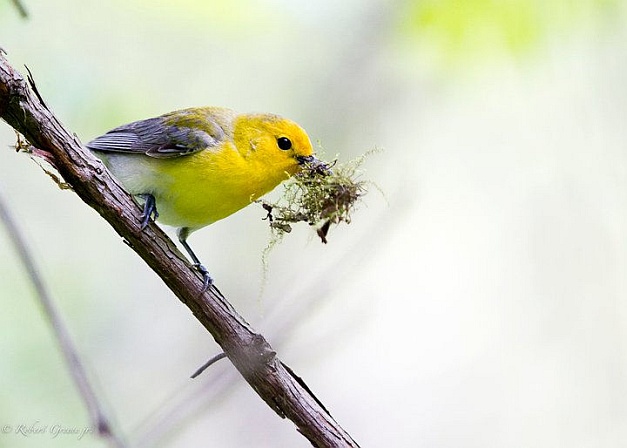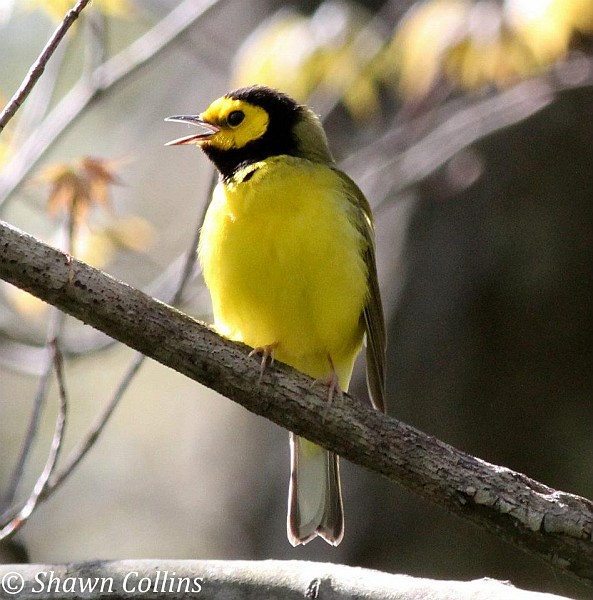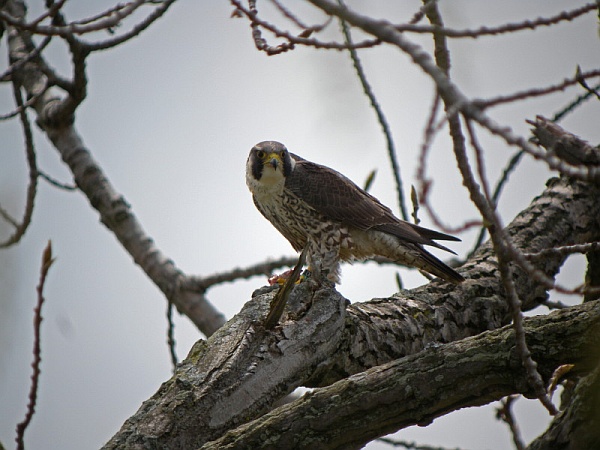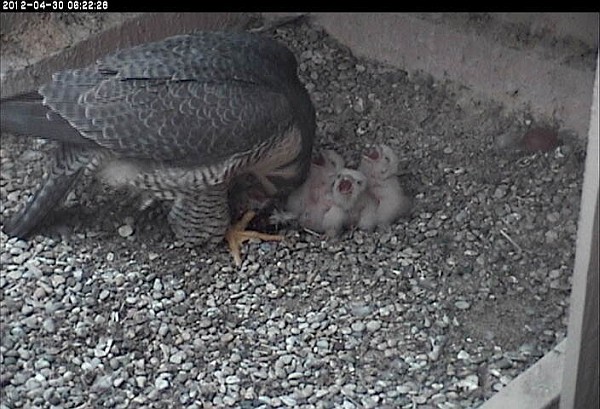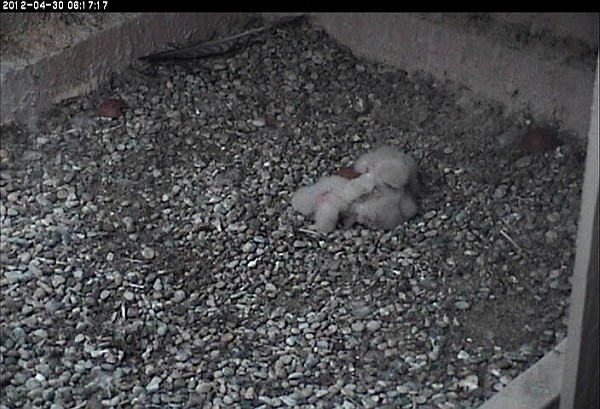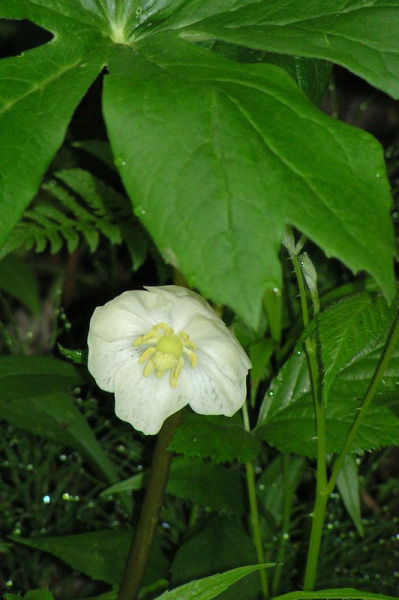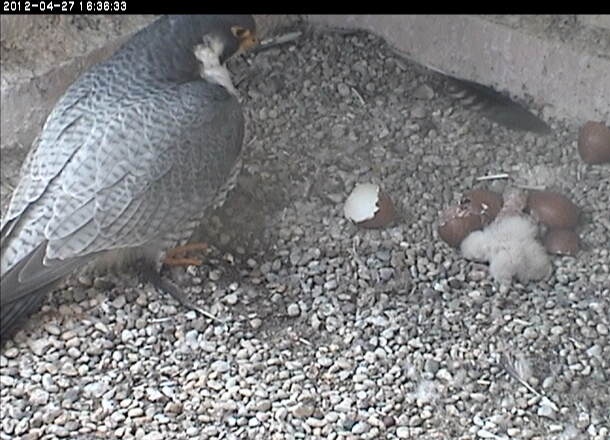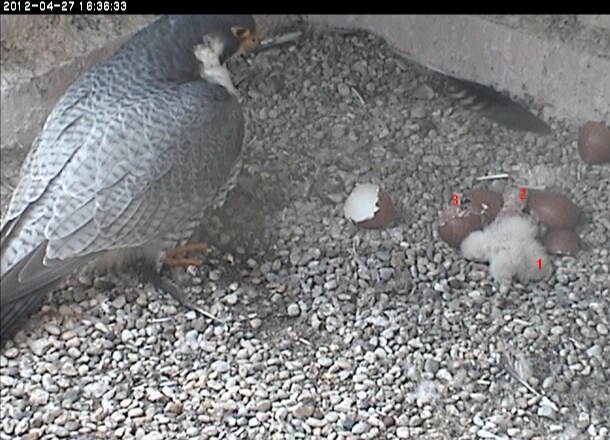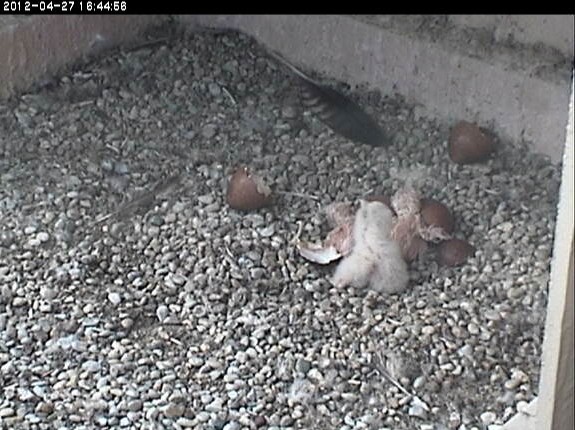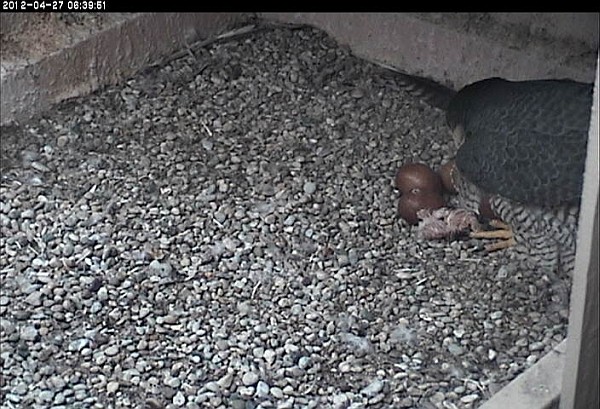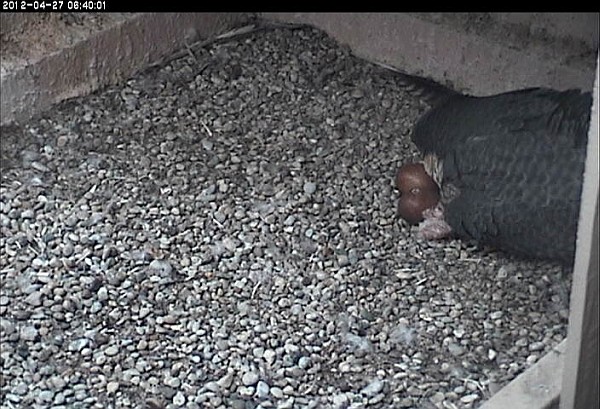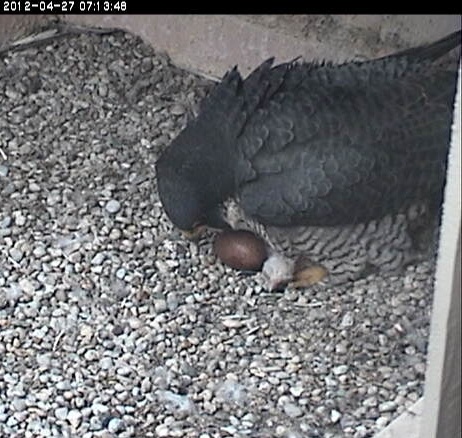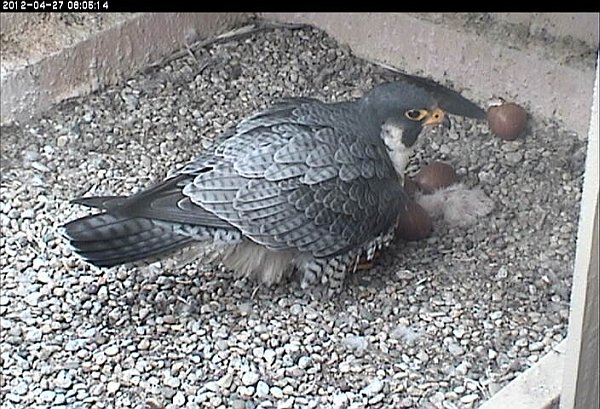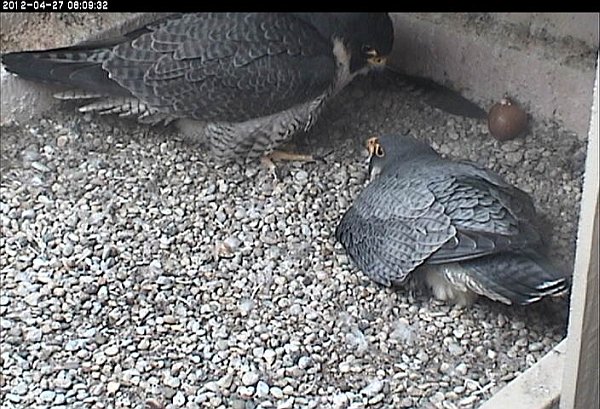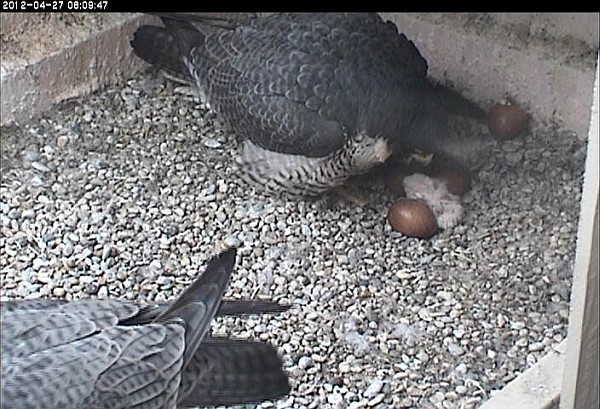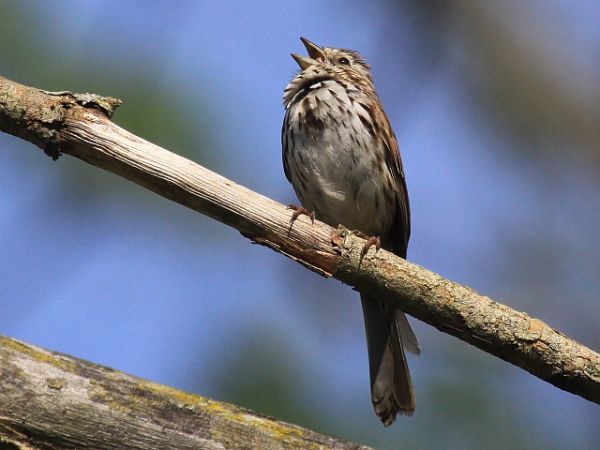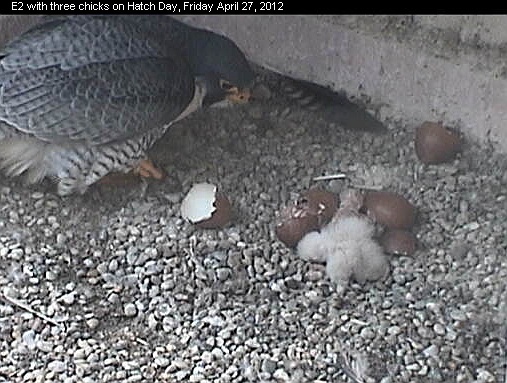
By now it’s safe to assume that Dorothy’s fourth egg will never hatch. Perhaps it wasn’t viable. Perhaps the pip we saw was actually just a white spot — a dab of poot from one of the chicks.
It takes a while to be sure an egg won’t hatch because the entire process from pip to liberation takes 50-72 hours for peregrines.
Hatching is the first major effort of a new bird and he’s on his own to complete it. His mother insists on being present for the hatch but she doesn’t break the shell. Her only assistance is to move the shell away when it’s finally opened.
How does the chick get out of the shell?
When a baby bird is ready to hatch its body takes up almost all of the egg’s interior. Though it’s in cramped quarters the chick has a tool, a temporary structure on top of its beak called an egg tooth, that’s sharp enough to cut the shell.
First the chick positions its head at the large end of the egg near the air space and uses its egg tooth to break the interior membrane. Now it can breathe and “peep.” The parents can hear the peeping. How cool!
The chick rests a while. Then it starts rubbing its egg tooth against one spot on the shell until it makes a hole — the pip. Starting at the hole, the chick now turns inside the shell bit by bit and hammers the circumference of the egg. Turn, hammer, rest. Turn, hammer, rest. When the line is complete the chick pushes the large end of the shell with its head and shoulders and the small end with its feet to separate the shell. Mom steps in and removes the shell.
It’s possible for the baby bird to mess this up and the mistake can be fatal. The chick must work fast enough that he remains damp inside the shell. Otherwise the membrance dries out and traps him inside. This year at Cleveland’s Terminal Tower one of the peregrine chicks hammered the shell longitudinally. The effort took so long that he died before he could open the egg.
Hatching is hard work. It’s a wonder that chicks know what to do while in the shell. It’s a wonder they turn and tap the circumference. It’s a wonder they have the energy to complete it and break free.
Every hatchling is a tiny miracle.
(photo from the National Aviary falconcam at Univ of Pittsburgh, 27 April 2012, 4:37pm)
